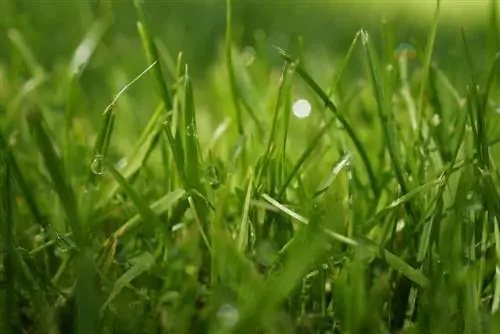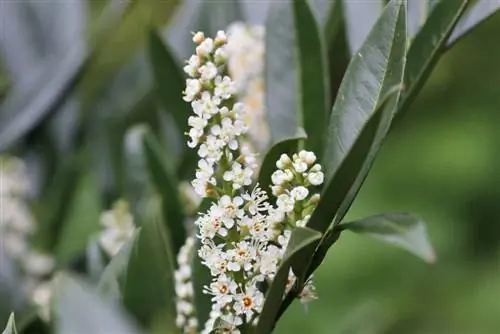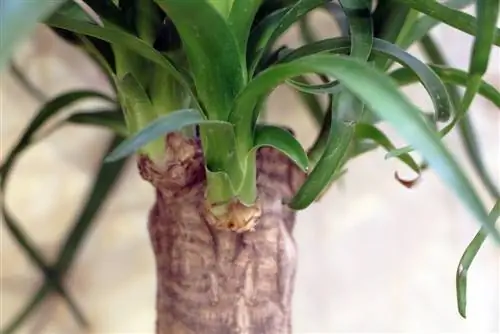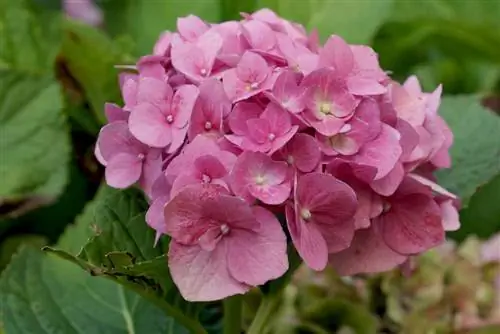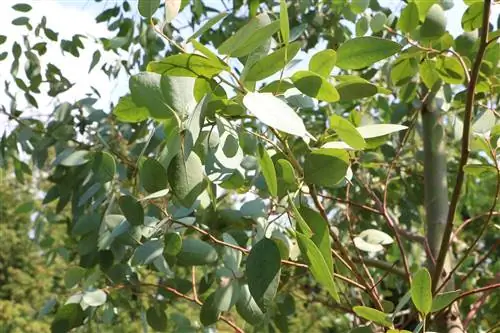- Author admin [email protected].
- Public 2023-12-17 03:39.
- Last modified 2025-01-24 12:45.
Eucalyptus in a pot spends the winter best in a frost-protected place in the house. It is not uncommon for the beautiful eucalyptus plants to dry out during the winter. We'll show you what you can do about it.
Saving dry eucalyptus
If you notice in spring that your eucalyptus has dried up during the winter, you need quick help. Reasons for the leaves dying can be:
- missing light
- lack of water supply
- Waterlogging
- Pests
How to save the eucalyptus:
- Take the plant out of the pot. Check the plant for pests in the root area.
- Place the eucalyptus in a container with water so that the roots can soak up well.
- Fill a drainage layer of gravel or pottery shards into your new bucket.
- Plant the eucalyptus in loose, nutrient-rich substrate.
- Now cut off the dried shoots. To do this, use sharp, clean scissors.
- Place the plant in a bright, sunny spot and water it regularly.
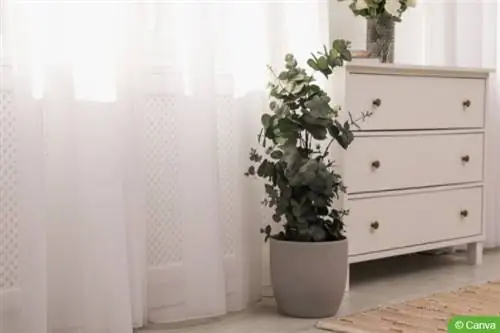
Fighting pests
If the leaves of the eucalyptus dry up while overwintering, in rare cases pests can also be the cause. Due to the essential oils contained in leaves and shoots, eucalyptus is usually well protected against pests. Spider mites often appear in warm, dry winter quarters.
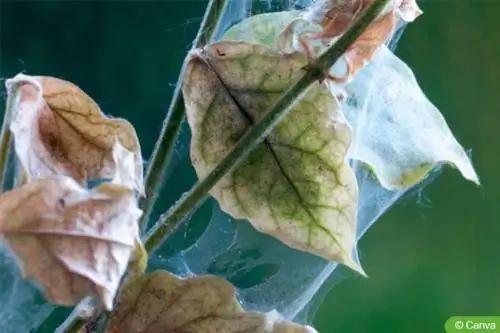
Tip:
Check plants in their winter quarters regularly. Spider mites can be recognized by their fine white webs. The insects suck the plant sap. The leaves then wilt and fall off. Rinse the leaves with a strong jet of water.
Prevent spider mite infestation in winter quarters:
- Avoid a drop in humidity in the winter quarters
- water regularly
- Spray leaves with water
Note:
Did you know that eucalyptus is also called the blue gum tree because of its blue-green leaves?
Winter eucalyptus safely
Anyone who cultivates eucalyptus as a pot plant must start looking for suitable winter quarters in autumn at the latest. Although some varieties are cold tolerant, container plants should not spend the winter outdoors. The plant with the blue-green leaves can only be left outside in really mild areas. To ensure that your eucalyptus does not dry out during the winter, you should note the following.
Overwintering eucalyptus outdoors
- Water the eucalyptus plant thoroughly again before overwintering.
- Wrap the plant pot in bubble wrap.
- Place the bucket on a wooden surface. Make sure that excess water can drain away easily.
- Cover the root area with leaves.
- Wrap the trunk of the eucalyptus tree with burlap or fleece.
Overwintering eucalyptus in the house

- For overwintering, choose a bright room with a temperature of around 10 degrees Celsius. Winter gardens and greenhouses are also suitable.
- Note: Eucalyptus must not be left dark in winter. A lack of light during wintering can cause eucalyptus leaves to dry out.
- Water the eucalyptus regularly. Under no circumstances should the root dry out completely.
- Avoid waterlogging. A drainage layer in the bucket and a permeable substrate protect against this.
Note:
The water supply in winter determines whether you can enjoy the beauty of the plant again in the new year. Check regularly whether the root ball is still sufficiently moist.
Frequently asked questions
Can the eucalyptus clippings be disposed of in the compost?
You can dispose of the dried branches and leaves in the compost. Dry eucalyptus leaves are actually too good to throw away. Try to see if there are any scents left in them. You can use them as an aromatic bath additive.
Can eucalyptus trees overwinter in beds?
A particularly hardy type of eucalyptus is the Eucalyptus gunnii, known as the Tasmania eucalyptus or must rubber tree, with its blue-green, fragrant leaves. In mild regions it can be cultivated in beds. In winter, cover the root area with a thick layer of leaves and brushwood. Protect the trunk with burlap, as the winter sun can cause frost cracks. We recommend cultivating eucalyptus in a pot and overwintering it indoors.


